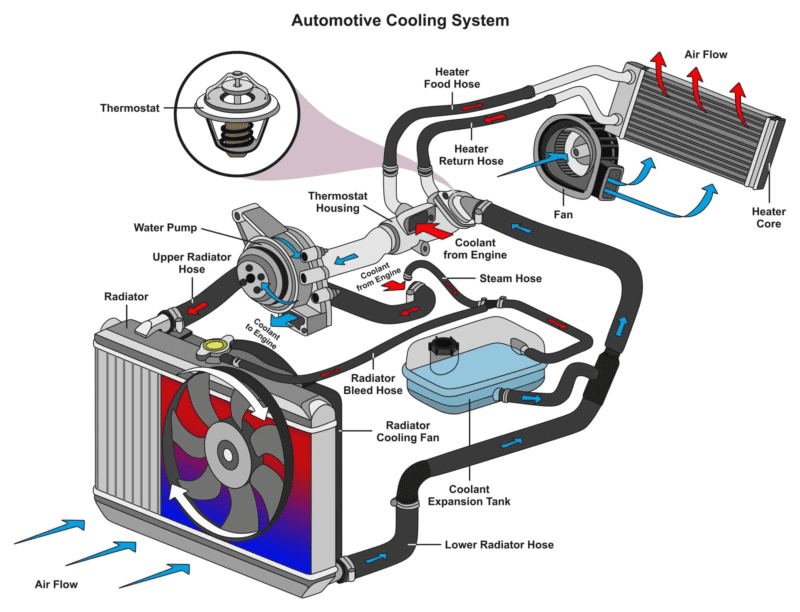The idea of an Engine Cooling System

Have you ever wondered how your car’s engine manages to run smoothly, even on the hottest of days? It’s all thanks to the incredible technology behind the engine cooling system.
This system is a crucial component in any vehicle with an internal combustion engine, responsible for regulating the temperature of the engine and preventing it from overheating. But how does it actually work?
Imagine: as you’re cruising down the highway on a sweltering summer day, the engine cooling system is hard at work circulating a mixture of coolant or antifreeze through the engine block. This mixture absorbs the heat generated by the engine’s combustion process, effectively preventing the engine from overheating and potentially causing severe damage.
But that’s not all – the heated coolant then travels through a radiator, where it’s cooled by passing air before being recirculated back to the engine. This helps maintain optimal engine temperatures, improving efficiency and reducing emissions.
Basic Components of Engine Cooling System
The engine cooling system has four main components:
- The Radiator – This is the most visible component of the cooling system, located at the front of the car. Its primary function is to dissipate heat from the hot coolant as it passes through the radiator tubes, which are cooled by airflow passing over the fins.
- The water pump – This component is responsible for circulating the coolant through the engine and radiator. The water pump is typically driven by a belt or chain that is connected to the engine crankshaft.
- The thermostat – This component regulates the flow of coolant through the engine and radiator. It opens and closes depending on the engine temperature to ensure the engine operates at optimal temperatures.
- The cooling fan – This component is responsible for increasing airflow over the radiator when the car is stationary or moving slowly. The fan is typically electrically powered and controlled by the engine’s computer system.
Working of Engine Cooling System
When you start your car’s engine, it creates a lot of heat. If left unchecked, this heat could cause serious damage to the engine. That’s where the engine cooling system comes in.
The cooling system works by circulating a liquid called coolant or antifreeze through the engine and radiator. As the coolant passes through the engine, it absorbs the heat generated by the engine’s combustion process.
The heated coolant then flows to the radiator, where it’s cooled down by airflow passing over the radiator’s fins. This process is similar to how blowing on hot soup cools it down.
The cooled coolant is then recirculated back to the engine, where the process starts over again. The system also includes a thermostat, which regulates the flow of coolant to maintain optimal engine temperature.
In some situations, like when the car is idling or in stop-and-go traffic, the cooling fan may kick in to increase airflow over the radiator and help keep the engine from overheating.

Drive Further, Save More: 5 Practical Tips For Boosting Your Car Mileage – TheAutoEngineer.com

